|
Click pictures for a larger version.
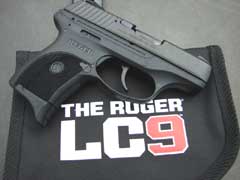
Ruger's new LC9 compact 9mm pistol.

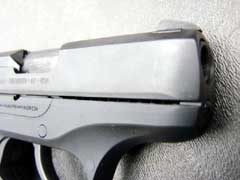
Edges are smoothly rounded for easy handling and
carrying.
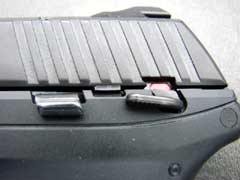
Slide lock (left) and manual safety (right).

Magazine release.
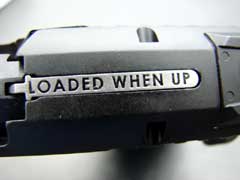

Visual and tactile loaded chamber indicator.
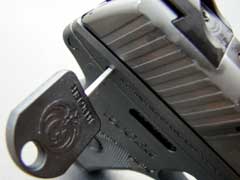
Internal key lock.
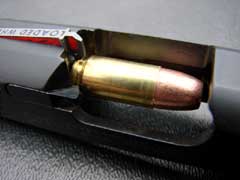
Heavy-duty extractor.
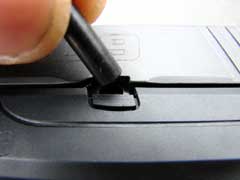
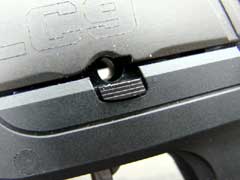
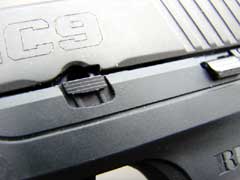
Disassembly pin is covered by a push-down latch to
prevent movement.
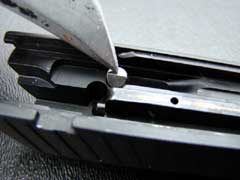
Firing pin safety prevents firing unless the trigger
is pulled.


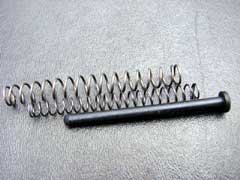


|
|
It has been almost three years now since
Ruger introduced their 380 LCP at
the 2008 SHOT Show. That little
pistol has proven to be one of the hottest-selling pistols ever
built, and the little jewels are still selling as fast as Ruger
can produce them, despite some really good competitive pistols
on the market. Since the introduction of the LCP 380, many have
been yearning for Ruger to produce a pocket-sized 9x19mm pistol.
Ruger’s excellent SR9c is a
compact double-stack 9mm, and while it is one of the best
compact nines on the market, it is still thicker than what many
shooters want, and the requests for a slimmer nine have
continued. Ruger has a “Voice of the Customer” program, and
also a link at Ruger.com to email
the CEO, Mike Fifer. Ruger listens to what the customer
wants to buy, and many have been asking for a subcompact 9x19mm
pistol. Ruger has now answered those calls with the LC9; a
slimmer, shorter, lighter-weight pistol chambered for the 9x19mm
cartridge.
The LC9 is more kin to the LCP than it is to
the SR9c pistol. Like the LCP, the LC9 is a hammer-fired,
locked-breech single-column pistol. The new LC9 is sized-up from
the LCP just enough to work with the longer, more-powerful 9x19
cartridge. The LC9 has a lightweight polymer frame with an
aluminum insert that keeps weight down and helps absorb recoil. The
barrel and slide have a matte black finish to the alloy steel
that closely matches that of the polymer frame. The LC9 also has
features that many want on a defensive pistol. The slide locks
back when the magazine runs empty. The LC9 also has a manual
thumb safety on the left side for right-handed shooters. The LC9
has a butter-smooth trigger pull, and the action of the slide
partially cocks the hammer, resulting in an excellent trigger
pull for a pocket pistol. In addition, the LC9 wears a real set
of easy-to-see drift-adjustable steel sights dovetailed into the
slide. Atop the slide is a loaded-chamber indicator, which is
easy to see and to feel, making this pistol California
compliant. California is a huge market, and with the built-in
firing pin safety, manual thumb safety, magazine safety,
internal key lock, and loaded chamber indicator, the LC9 will be
available to folks throughout most of the United States. The LC9
uses dual recoil springs which ride on a nylon guide rod.
Critical dimensions are listed in the chart
below. Since the LC9 is bound to be compared to both the SR9c
and the 380 LCP, we will do that here. The weights are listed in
ounces, and linear measurements in inches. The grip and frame
widths were measured at their widest points, which includes the
control levers. Maximum width includes safety levers. Height
includes the sights and magazine base. The LC9 comes with a flat
magazine base and also with a finger extension base. The height
was measured with the flat base installed. The trigger pull on
the LC9 pistol is very good, with a smooth release. Like the 380
LCP, the slide pre-cocks the action. The trigger pull is listed
as pounds of pressure. Weights are listed with an empty magazine
in place.
| |
SR9c |
LC9 |
LCP |
| Cartridge |
9x19mm |
9x19mm |
380 ACP |
| Weight |
23.2 oz |
17.1 oz |
9.42 oz |
| Height |
4.51" |
4.46" |
3.61" |
| Length |
6.8" |
5.97" |
5.17" |
| Slide Width |
0.98" |
0.89" |
0.74" |
| Maximum Grip Width |
1.18" |
0.96" |
0.775" |
| Maximum Frame Width |
1.15" |
0.90" |
0.80" |
| Maximum Width |
1.26" |
1.04" |
0.80" |
| Barrel Length |
3.5" |
3.12" |
2.79" |
| Trigger Pull |
5.2 lbs |
6.3 lbs |
5.4 lbs |
| Capacity |
10+1 |
7+1 |
6+1 |
I fired a variety of ammunition over the
chronograph to check velocities, with the results listed in the
chart below. Velocities are listed in feet-per-second. Bullet
weights are listed in grains. JHP is a jacketed hollowpoint
bullet. DPX is a hollow nose homogenous copper bullet. EPR is a
specialty premium bullet from Extreme
Shock. FP is a frangible, pre-fragmented flatnose bullet.
FMJ is a full metal jacket roundnose bullet. Velocities were
taken at an elevation of 541 feet above sea level, with an air
temperature of forty-four degrees Fahrenheit. Velocities were
recorded at ten feet from the muzzle.
| Ammunition |
Bullet Weight |
Velocity |
| WCC NATO FMJ |
124 |
1085 |
| Buffalo Bore +P JHP |
115 |
1406 |
| Buffalo Bore +P JHP |
147 |
1111 |
| Cor-Bon
Pow’RBall |
100 |
1508 |
| Cor-Bon +P DPX |
115 |
1224 |
| Stryker
JHP
|
115 |
1032 |
| International Cartridge
FP |
100 |
1171 |
|
Extreme Shock
EPR
|
115 |
1228 |
Shooting the new LC9 went as expected. There
were no malfunctions of any kind. Every cartridge fed, fired,
and ejected perfectly. Ejection was to the right, and the fired
cases cleared both the weapon and the shooter cleanly. However,
towards the end of my second day of shooting, a problem occurred
with the firing pin or something related on the test gun. It
began piercing primers, with a bit of the primer cup material
stuck into the firing pin hole in the slide. I had never seen
anything like this before, so I sent it back to Ruger, along
with some fired cases. They took it apart, looked for anything
obviously wrong, and could find nothing. They reassembled the
pistol, fired it, but could not duplicate the malfunction. This
was a preproduction pistol, and could have possibly had a small
burr on the firing pin. I don’t know. No one knows. Just one
of those freak things, I guess. Anyway, I got another LC9 in
here, and it shoots like a Ruger. Function is perfect. Fired
cases and primers look perfect, with all ammo tested, including
some Plus P stuff tested just to try to duplicate the primer
problem experienced with that early pistol. The little LC9
functioned perfectly, with many, many rounds fired through it.
The smooth trigger pull made the little nine a delight to shoot.
The LC9 ships with one seven-round magazine with a flat base
plate, but Ruger includes a finger extension base plate in the
box, and the base plates are easily switched. I prefer the feel
of the weapon with the finger extension. It makes the pistol
easier to control, and does not compromise concealability.
Ruger did a really good job in contouring the
LC9 for concealed carry. The edges are all nicely rounded, and
the pistol is as smooth as a used bar of soap, yet the texturing
of the grip makes the weapon easy to control while firing. It
also appears that a lot of thought went into the magazine
release button. It protrudes enough for a quick magazine change,
but where the button meets the frame towards the front of the
weapon, it is almost flush, to prevent the accidental release of
the magazine while carried concealed. Again, the sights on this
pistol are just right. They are plenty large enough to see
easily, but not so large as to be obtrusive. The thumb safety
seems to have the right amount of resistance. It is easy to
flick off quickly to fire, but takes a bit more effort to
engage, preventing the weapon from accidentally going “on safe”
by being bumped with the shooter’s thumb during recoil.
Engaging the thumb safety locks both the slide and trigger from
movement. The safety is a right-handed only unit, but that does
not bother me at all. I carry it with the safety off. The weapon
cannot fire unless the trigger is pulled, but the safety is
there for those who choose to use it. The internal key lock
disengages the trigger. It is there if you choose to use it, but
is otherwise unobtrusive and easily ignored. The slide locked
open on an empty magazine every time during testing, never
failing to alert the shooter than the weapon was empty. Dropping
the magazine also blocks the trigger from movement. The
extractor is a spring-loaded, heavy-duty piece, and extraction
and ejection were positive. The barrel of the LC9 turned in very
respectable velocities for its length. I was surprised that
there was very little velocity loss compared to some full-sized
pistols in which I have fired the same brands and types of
ammunition. While a bit larger than the little 380 LCP, the LC9
packs a much larger punch. Recoil was not a problem with the
LC9. While the gun does move a bit, especially with the premium
Plus P stuff, it is not painful to shoot at all. I never noticed
my trigger finger during recoil, and that means that it does not
pinch, as some other small pistols do to me. The LC9 sits in the
hand well, and the slide never came close to touching the
shooting hand. The long, smooth trigger pull made hitting the
target at distances from three to twenty-five yards easy. This
pistol is built for social work, so no bench-rest groups were
fired, choosing only to fire on standard silhouette targets at
realistic distances. At least that was my initial plan. Pistols
like this are not made for punching paper, but I had to try it
anyway, since the LC9 does have excellent sights installed.
Shooting Stryker
hollowpoint ammo, I was able to keep five-shot groups well under
two and one-half inches at twenty five yards, shooting off of
the Target Shooting,
Inc. Model 1500 rest. That is the best that I can do with my
eyes and the short sight radius of the LC9, but it does show
that the little pistol is built right. Also, while a pocket
pistol is not the best for such work, there are times when an
accurately-placed head shot might be necessary, and when the
need arises, the shot will have to be made with whatever handgun
is available. Such a pistol as the LC9 is more likely to be
readily available that is a designated target gun. It is good to
know that the LC9 is capable, if the shooter is up to the task.
The new LC9 is a welcome addition to Ruger’s
line of auto pistols. It fills the gap between the subcompact
380 LCP and the compact SR9c, and is a pistol for which shooters
have been asking. It is small enough and light enough to always
be at hand. In a good pocket holster, the LC9 can ride
well-hidden and causes no discomfort, and is as close as
slipping your hand into your pocket. That is one reason that I
favor pocket carry. It is natural and no causes no alarm at all
to most people to see someone standing with a hand in the front
pocket. If the need arises, you can be at ready with your hand
on the weapon’s grip, but will not have prematurely drawn the
weapon if it was a false alarm. A good, thin leather pocket
holster will hold the LC9 in position, while keeping the weapon
free from pocket lint and such.
The Ruger LC9 comes with one seven-round
magazine, extra extended magazine base pad, pad lock,
instruction manual, and a soft zippered case. Like all Ruger
firearms, the LC9 is built right, backed by Ruger’s famous
customer service, and is made in the USA.
Check out the new LC9 and other Ruger
products at www.ruger.com.
To buy extra magazines and accessories for
the LC9, go to www.shopruger.com.
For the location of a Ruger dealer near you,
click on the DEALER FINDER at www.lipseys.com.
To order the LC9 online, go to www.galleryofguns.com.
Jeff Quinn
  
Got something to say about this article?
Want to agree (or disagree) with it? Click the following link to
go to the GUNBlast Feedback Page.
|
|
Click pictures for a larger version.
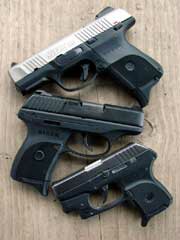
Top to bottom: Ruger SR9c, Ruger LC9, Ruger LCP.
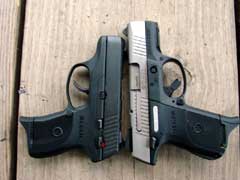
LC9 (left) compared to SR9c (right).
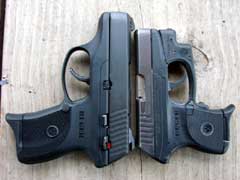
LC9 (left) compared to 380 LCP (right).

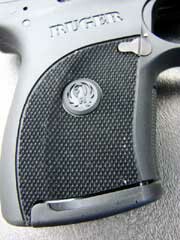

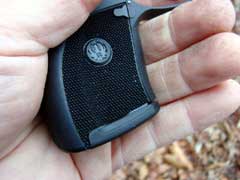
The LC9 comes with one seven-round magazine with a
flat base, plus an interchangeable finger-rest base.
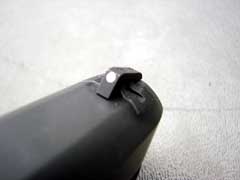
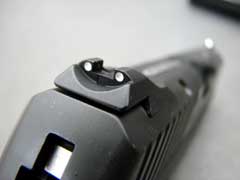

Excellent three-dot sights.

Author highly recommends Cor-Bon DPX ammunition.
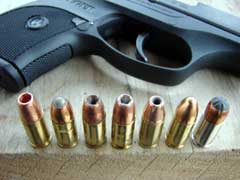
Author put the LC9 through its paces using a wide
variety of ammunition.
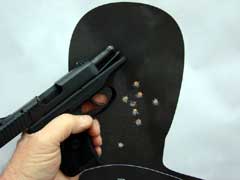
Seven-yard rapid-fire group.
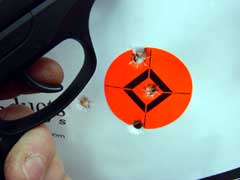
25-yard five-shot rested group.
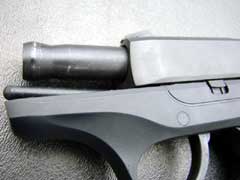
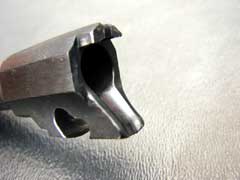
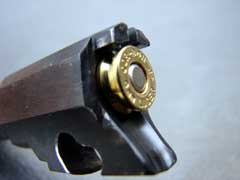
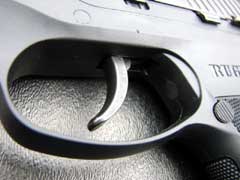

|
![]()